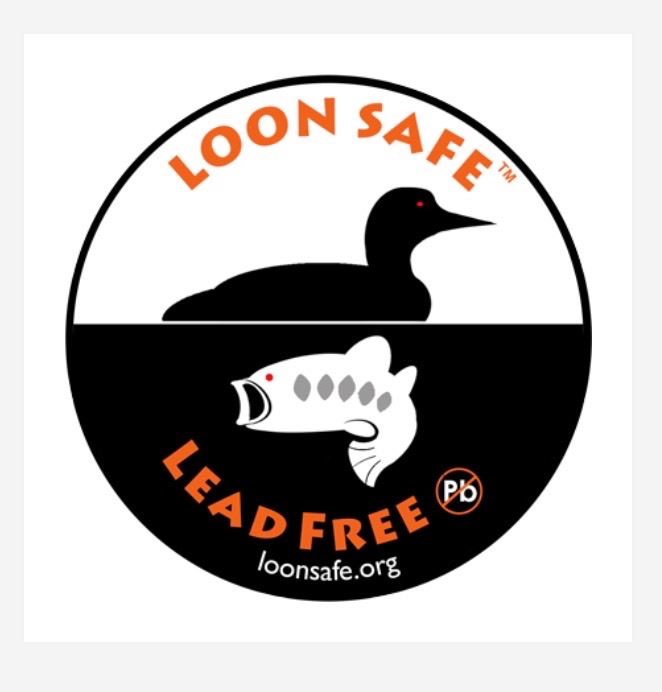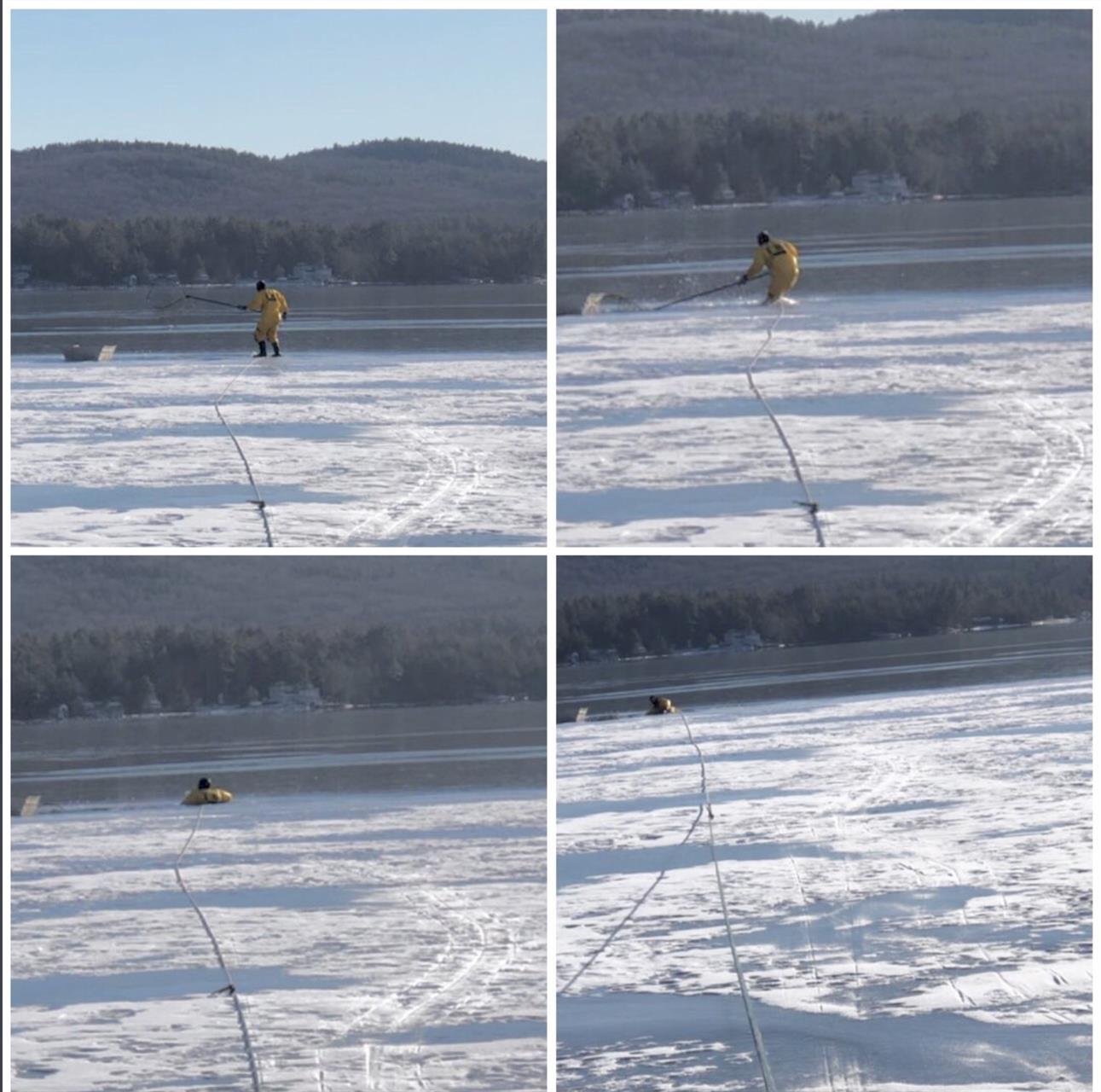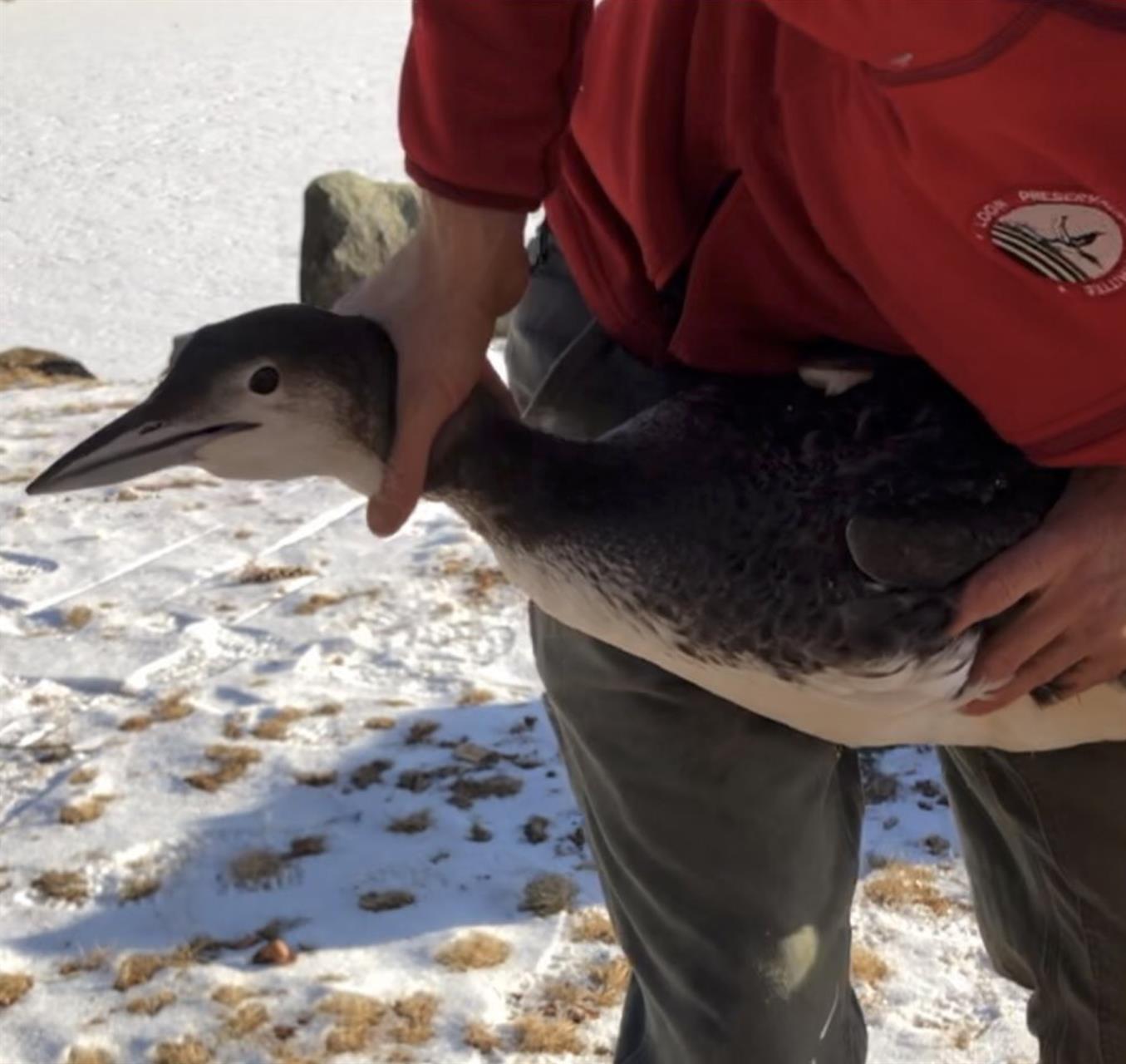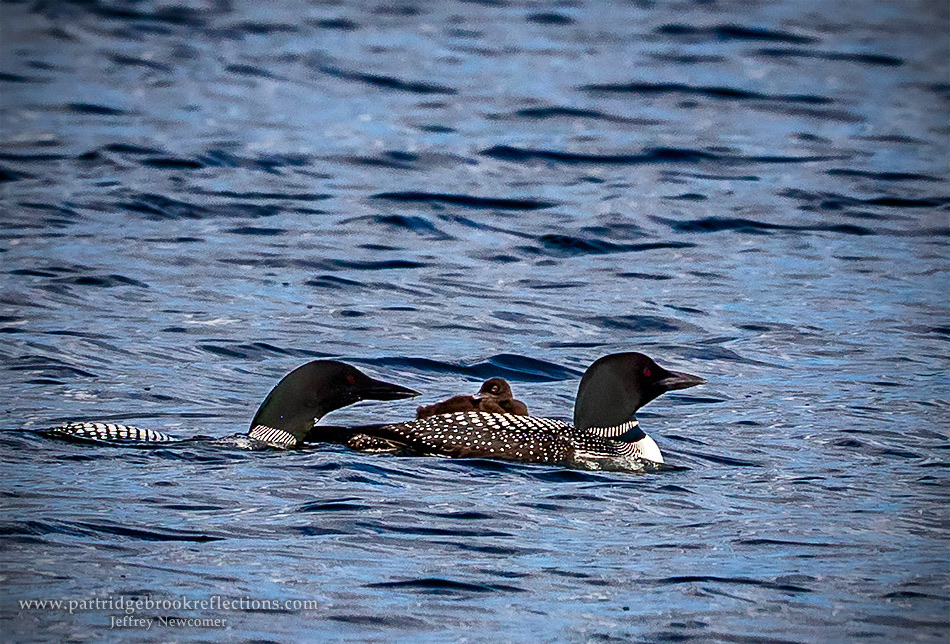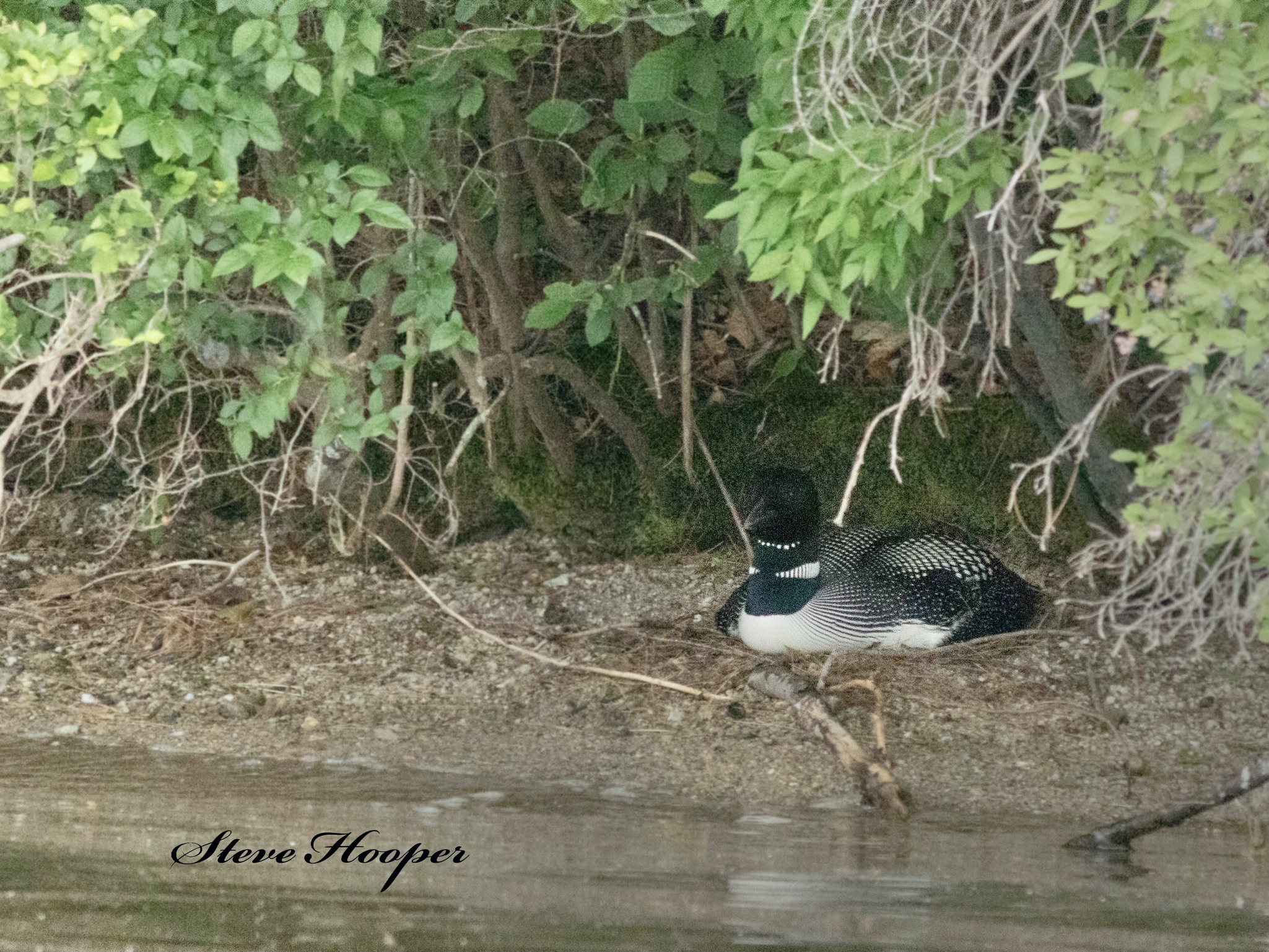Photo by Kittie Wilson
Loons
Spofford Lake has been fortunate to have had loon chicks in both 2020 and 2021. Many folks have expressed interest in learning more, so here is a primer on Common Loons (Gavia immer), mostly courtesy of the Loon Preservation Committee. How common are loons to Southern New Hampshire? North America is home to five species of loons with the Common Loon being the most widespread and well-known. It is the only loon species that breeds as far south as New Hampshire. Do loons mate for life? Loons are a migratory species that spend the breeding season on inland lakes and overwinter on the ocean. They arrive on their breeding lakes shortly after the ice goes out in the spring and remain late into the fall or early winter, often leaving for the ocean shortly before ice forms. Loons display high territory fidelity, and individuals typically return to the same breeding lake year after year. This often results in the same male and female loons pairing up and breeding together in consecutive years; however, contrary to popular belief, loons do not mate for life. If one member of a pair dies or is displaced by a rival, its mate will accept a new breeding partner. What is the nesting season? In NH, loons typically initiate their nests between late May and late June. Because loons cannot easily walk on land, their nests are built at the water’s edge, which makes them vulnerable to a number of threats. Loons generally prefer to nest on islands as opposed to mainland shoreline. Loons typically lay 1 or 2 eggs per nest attempt. Male and female loons share incubation duties equally. Adult loons provide high levels of parental care to their chicks until the chicks reach fledging age (around 12 weeks of age). Because of this extended period of care, loons have only one brood of chicks per year. Loon chicks are vulnerable to predation and attacks by intruding loons. Due to nest failures, loss of chicks, or years in which pairs do not nest, the average loon pair in New Hampshire successfully raises just one chick to fledgling age every two years. This slow rate of reproduction is counter balanced by the loon’s long lifespan—the oldest loon of known age in New Hampshire is over 30 years old. This means that although loons produce few chicks each year, they have the potential to produce many chicks over the course of their lifetimes. Because of this, the viability of our loon population relies heavily on adult loon survival. When do the chick(s) become independent of the parents? Around their eighth week, once juvenile plumage has developed, chicks can dive efficiently and forage, and capture about 50% of their daily food. They begin exercising their wings to prepare for flight. By 12 weeks of age, chicks are self-sustaining, but still may ‘beg’ for a meal from the parents. At this point in the season, one parent may leave for the ocean, but the other typically stays with the chicks until they reach +/- 12 weeks when they become fully independent. At this time, they may also take their first flight and eat fish of similar size to adults. At this point, he second parent may migrate to the ocean, leaving chicks entirely alone on their natal lakes. Chicks typically leave their lakes 1-3 weeks after their parents, though some remain into the early winter. Or like the loon of Spofford (late 2021), you need a hand from humans. The Loon Preservation Committee rescued our dear chick, see sidebar photo and on the SLA website. Thanks to Gary Galka for the pics. How do we keep the loons safe on Spofford Lake? As far as the situation on Spofford Lake is concerned, Val Starbuck, the SLA team lead for loons offered these comments in 2021: “Loons have been coming to Spofford Lake for many, many years, but typically only to spend a short time on their way north. In my years of living on the lake full-time, I only noticed loons staying the whole summer beginning about 8 years ago. The first nest the Loon Preservation Committee knows of happened in 2020 and we were all very fortunate to see one chick arrive and survive to adulthood. It’s amazing that their first nest resulted in a chick that survived because the odds are not favorable. Enjoy the loons and but please share the space. Stay at least 150 feet away from any loon and be particularly careful now through July, when the chick is so very small. Often the parents will both dive for food and leave the chick unattended on the surface which makes it super difficult to see. “ What about those distinctive loon calls? While Spofford Lake is lucky to have its own live loon background music, visit a YouTube post on loon calls presented by The Harris Center for Conservation Education in Hancock, NH to learn to distinguish the calls--a wail, hoot, tremolo or yodel. What are the principal threats to loons? Lead fishing tackle is the largest single cause of death in adult loons, typically causing death within two to four weeks. As a result, lead fishing tackle weighing less than one ounce was outlawed by the State on June 1, 2016. Old tackle, tucked away in old tackle boxes, still finds its way into lakes and sometimes loons. If you suspect that your tackle was purchased before 2016, we urge you, for the sake of the Spofford loons, to dispose of it. Visit http://loonsafe.org for more info. Loons are also significantly impacted by habitat destruction, climate change, and lake water level fluctuations. They may also be impacted by water borne contaminants. What is the purpose of banding? In August 2021, the LPC made a failed attempt to band two adult loons. Banding is undertaken to identify the pair and record behaviors, which in turn, contributes to a database of knowledge to enable further study and any needed recovery efforts. Each adult is uniquely and relationally identified. Chicks and teenagers are not banded as they are still growing. Banding allows biologists to assess for example: age, determine if a pair returns annually to the same lake, and to monitor movements, e.g., winter feeding grounds. Banding only occurs if a pair is believed to have returned to the same lake and only if a chick(s) has hatched in two successive years. In addition to banding, blood samples are typically taken to determine the presence of lead and to otherwise assess the health of the birds. Page updated March 20, 202 |


